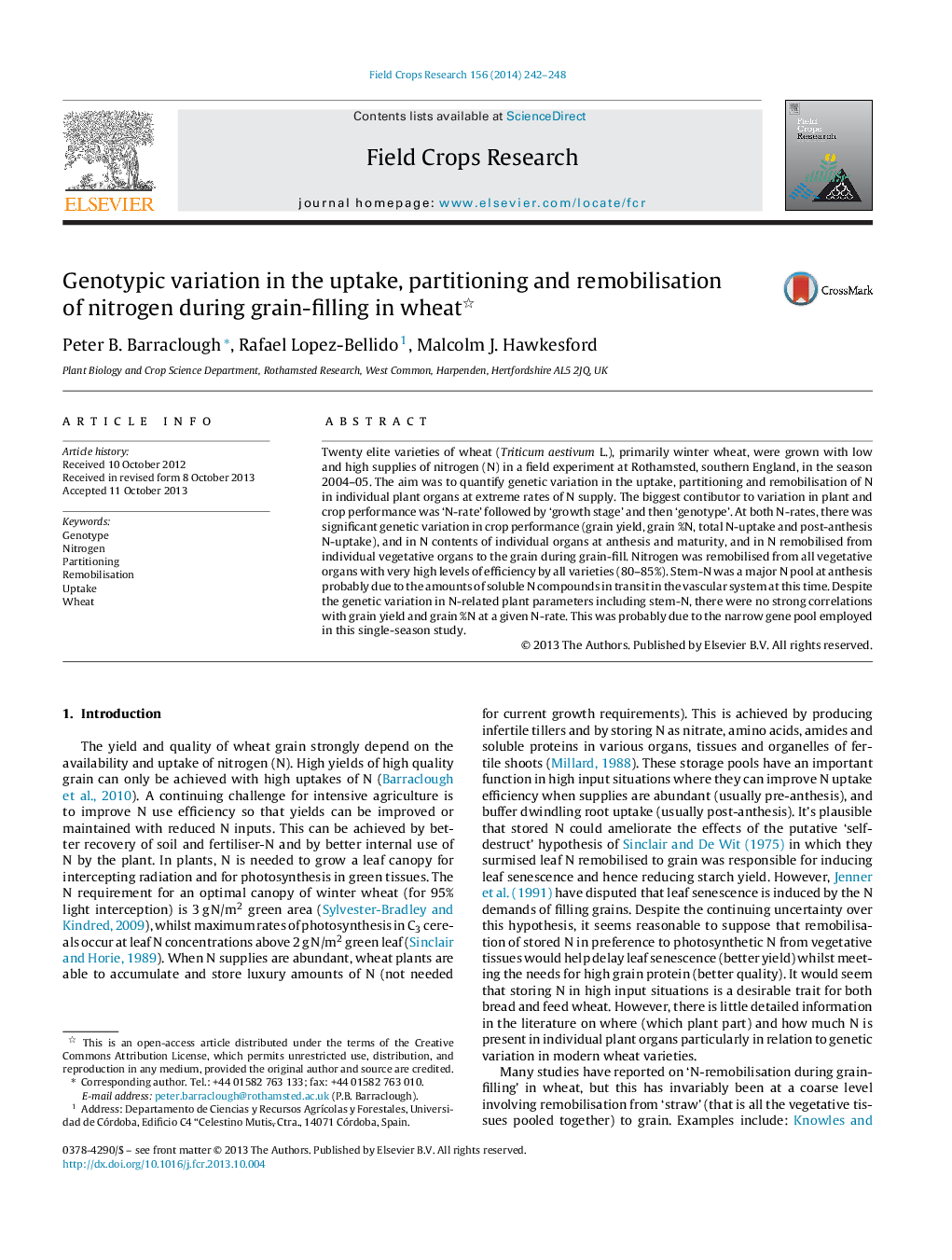| Article ID | Journal | Published Year | Pages | File Type |
|---|---|---|---|---|
| 6375133 | Field Crops Research | 2014 | 7 Pages |
Abstract
Twenty elite varieties of wheat (Triticum aestivum L.), primarily winter wheat, were grown with low and high supplies of nitrogen (N) in a field experiment at Rothamsted, southern England, in the season 2004-05. The aim was to quantify genetic variation in the uptake, partitioning and remobilisation of N in individual plant organs at extreme rates of N supply. The biggest contibutor to variation in plant and crop performance was 'N-rate' followed by 'growth stage' and then 'genotype'. At both N-rates, there was significant genetic variation in crop performance (grain yield, grain %N, total N-uptake and post-anthesis N-uptake), and in N contents of individual organs at anthesis and maturity, and in N remobilised from individual vegetative organs to the grain during grain-fill. Nitrogen was remobilised from all vegetative organs with very high levels of efficiency by all varieties (80-85%). Stem-N was a major N pool at anthesis probably due to the amounts of soluble N compounds in transit in the vascular system at this time. Despite the genetic variation in N-related plant parameters including stem-N, there were no strong correlations with grain yield and grain %N at a given N-rate. This was probably due to the narrow gene pool employed in this single-season study.
Related Topics
Life Sciences
Agricultural and Biological Sciences
Agronomy and Crop Science
Authors
Peter B. Barraclough, Rafael Lopez-Bellido, Malcolm J. Hawkesford,
